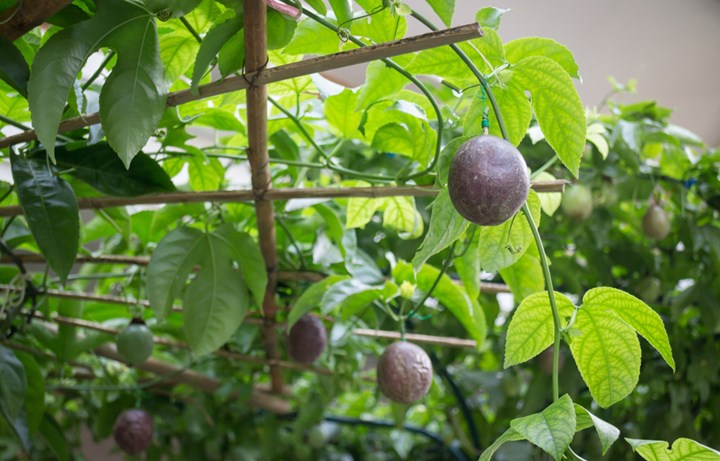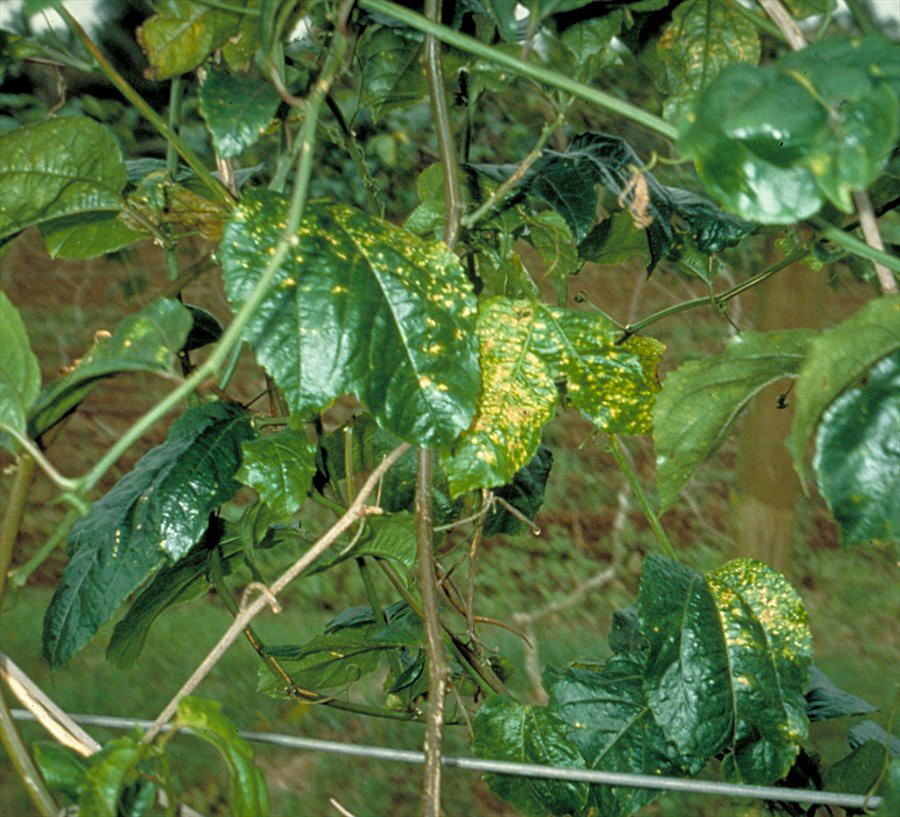Choosing the Right Environment for Your Passion Vine
Passion vines are sensitive to their surroundings, and selecting the right environment is crucial for their growth and development. When learning how to plant passion vine, it’s essential to consider the ideal climate, soil, and light conditions. Warm temperatures, typically between 65°F to 90°F (18°C to 32°C), are ideal for passion vines, making them well-suited for regions with mild winters and hot summers. In terms of soil, passion vines thrive in well-draining soil with a pH between 6.0 and 7.0. Adding organic matter such as compost or manure can improve soil fertility and structure, creating an optimal growing condition. Additionally, passion vines require full sun to partial shade, with at least six hours of direct sunlight per day. By replicating these ideal conditions, you’ll be well on your way to successfully growing a thriving passion vine.
Preparing the Soil for Your Passion Vine
Before learning how to plant passion vine, it’s essential to prepare the soil to provide the best possible start for your vine. Passion vines thrive in well-draining soil that is rich in organic matter. To achieve this, add a 2-inch layer of compost or well-rotted manure to the planting area. This will improve soil fertility, structure, and drainage. If your soil is heavy clay or sandy, mix in some organic matter to balance its composition. Additionally, test your soil pH and adjust it if necessary. Passion vines prefer a slightly acidic to neutral soil pH, ranging from 6.0 to 7.0. Apply fertilizers according to the manufacturer’s instructions, taking care not to over-fertilize, which can damage your vine. By preparing the soil properly, you’ll create an ideal environment for your passion vine to grow and thrive.
How to Plant Passion Vine Seeds or Cuttings
When learning how to plant passion vine, it’s essential to follow the correct procedures for sowing seeds or planting cuttings. For seeds, sow them 1/4 inch deep and 1-2 inches apart in a seed tray or small pots filled with a well-draining seed starting mix. Water gently but thoroughly, and maintain a consistent temperature of around 75°F (24°C) until germination, which typically takes 1-3 months. For cuttings, take 4-6 inch stem sections from the tip of a mature passion vine, removing lower leaves and dipping the cut end in rooting hormone. Plant the cutting in a pot or directly in the ground, burying it up to the first true leaf. Water well and provide bright, indirect light. Space multiple plants 12-18 inches apart to allow for proper growth and air circulation. Water regularly, but avoid overwatering, which can lead to root rot. By following these steps, you’ll be well on your way to successfully growing a passion vine from seeds or cuttings.
Supporting Your Passion Vine’s Growth
As passion vines can grow quite vigorously, providing support is crucial to keep them healthy and thriving. One of the most effective ways to support passion vines is by using trellises or stakes. These structures allow the vine to climb upwards, promoting better air circulation and sunlight penetration. When using trellises, make sure they are sturdy and at least 6-8 feet tall to accommodate the vine’s growth. For stakes, drive them into the ground near the base of the plant, gently twining the stem around the stake as it grows. Pruning techniques also play a vital role in supporting passion vine growth. Regular pruning helps to control the vine’s spread, encourages bushy growth, and promotes more blooms. Remove any dead or damaged stems, and cut back long vines to encourage branching. By providing the right support, you’ll be able to enjoy a lush, thriving passion vine that will continue to impress with its beauty and fragrance.
Watering and Fertilizing Your Passion Vine
Proper watering and fertilization are essential for healthy growth and blooming of passion vines. Water your passion vine regularly, but avoid overwatering, which can lead to root rot. Check the soil moisture by inserting your finger into the soil up to the first knuckle. If the soil feels dry, it’s time to water. Water at the base of the plant, avoiding the leaves to prevent fungal diseases. Aim to provide about 1-2 inches of water per week, either from rainfall or irrigation. When it comes to fertilization, passion vines benefit from regular feeding. Use a balanced fertilizer (10-10-10 NPK) and apply it according to the manufacturer’s instructions. You can also use compost or well-rotted manure to provide additional nutrients. Fertilize your passion vine every 2-3 weeks during the growing season (spring and summer) to promote healthy growth and blooming. By following these watering and fertilization tips, you’ll be able to enjoy a thriving and flowering passion vine.
Pest and Disease Management for Passion Vines
Passion vines can be susceptible to various pests and diseases, which can hinder their growth and blooming. Some common pests that affect passion vines include aphids, whiteflies, and spider mites. These pests can be controlled using organic methods such as neem oil, insecticidal soap, and horticultural oil. Regularly inspect your passion vine for signs of infestation, such as curled or distorted leaves, and take action promptly to prevent the infestation from spreading. When it comes to diseases, passion vines are prone to fungal infections such as root rot and leaf spot. These diseases can be prevented by providing good air circulation, watering at the base of the plant, and removing any infected leaves or stems. If you do encounter a disease, treat your passion vine with a fungicide specifically designed for ornamental plants. Additionally, practice good garden hygiene by disinfecting your pruning tools and removing any debris from the garden. By being proactive in monitoring your passion vine’s health and taking prompt action to address any issues, you can prevent pests and diseases from taking hold and enjoy a thriving and healthy passion vine.
Pruning and Training Your Passion Vine
Pruning and training are essential techniques for promoting healthy growth, encouraging flowering, and controlling the spread of passion vines. Prune your passion vine regularly to remove any dead, diseased, or damaged stems, which can help prevent the spread of disease and encourage new growth. Use clean and sharp pruning tools to make cuts just above a node, and remove any weak or spindly growth. Training your passion vine involves providing support for the stems to climb and twine around. Use trellises, stakes, or other supports to guide the stems upwards and outwards, and gently twine the stems around the support using soft ties or twine. Regular pruning and training can help promote a bushy and compact growth habit, encourage more blooms, and keep your passion vine looking its best. Additionally, pruning can help control the spread of passion vines, which can be invasive in some areas. By pruning back long stems and removing any suckers, you can keep your passion vine under control and prevent it from taking over other plants in the garden. By following these pruning and training tips, you can enjoy a healthy, flowering, and well-behaved passion vine.
Tips for Encouraging Passion Vine Blooms
Passion vines are known for their exotic and intricate flowers, but they can be finicky when it comes to blooming. To encourage your passion vine to produce plenty of blooms, make sure it’s receiving the right temperature, light, and nutrient requirements. Passion vines thrive in warm temperatures between 65-75°F (18-24°C), so avoid placing them in areas with drafts or extreme temperature fluctuations. Provide your passion vine with full sun to partial shade, as it requires at least 6 hours of direct sunlight per day to produce blooms. In terms of nutrients, passion vines are heavy feeders and require regular fertilization. Use a balanced fertilizer that’s high in phosphorus to promote blooming, and apply it according to the manufacturer’s instructions. Additionally, make sure your passion vine is receiving adequate water, as drought can prevent blooming. By providing your passion vine with the right conditions, you can encourage it to produce plenty of beautiful blooms. Remember to learn how to plant passion vine correctly, as this will also impact the blooming process. With proper care and attention, your passion vine should be blooming in no time.





:max_bytes(150000):strip_icc()/passion-flowers-1403114-02-53d34571c6084810b9ef2f6c34d8838a.jpg)


